Moving abroad can be exhilarating, but one of the first practical questions most people ask is: Will it cost me more or less to live there?
Croatia and the United States offer a high quality of life, but the day-to-day expenses can be different. Sometimes shockingly so.
Many expats, retirees, and digital nomads are increasingly interested in Croatia for its scenic coastline, slower pace of life, and affordability. But how much cheaper is Croatia really, and which factors matter most when choosing between these two destinations?
This guide follows a category-by-category approach to give you a broad overview of where you might save and where the costs could be higher than expected.
1. Overall Cost of Living
Monthly Expenses (Single Person)
- Croatia: ~$950–$1,200
- United States: ~$2,300–$2,600
Monthly Expenses (Family of Four)
- Croatia: ~$2,700–$3,200
- United States: ~$5,500–$6,000
Croatia can be anywhere from 40% to 55% cheaper overall than the United States, depending on which region you compare.
Split and Zagreb, for instance, might be more expensive than smaller Croatian towns, but they’re still generally cheaper than most major US cities.
Takeaways
- Croatia’s lower costs can be particularly beneficial for remote workers and retirees with incomes sourced from outside Croatia.
- Those planning to work locally in Croatia should remember that salaries are typically lower than in the US. While it’s cheaper to live in Croatia, your monthly take-home pay may not stretch as far if you’re earning local wages.
2. Housing and Utilities
Housing stands out as one of the most substantial differences between Croatia and the United States. Rentals and property purchases in Croatia can be significantly lower, particularly in inland areas, compared to pricey coastal hotspots or big American cities.
| Expense | Croatia | United States |
| One-Bedroom Rent (City Center) | $400–$650/month | $1,400–$1,800/month |
| One-Bedroom Rent (Outside Ctr) | $300–$500/month | $1,100–$1,400/month |
| Three-Bedroom Rent (City Ctr) | $700–$1,200/month | $2,200–$2,700/month |
| Utilities (for 85 m² Apt) | $100–$160/month | $150–$200/month |
Takeaways
- Rents in major Croatian cities like Zagreb or Split remain significantly lower than the average US city. However, there is a growing trend toward higher rents in popular tourist areas along the coast. These markets are only heating up as more people become dual citizens of Croatia.
- Utility costs (electricity, heating, cooling, water, garbage) in Croatia can be slightly lower or about equal to many parts of the US—but prices can spike during peak tourist seasons in coastal regions.
3. Food and Groceries
Croatia is well-known for its Mediterranean-style cuisine (particularly along the coast) and for the fresh produce in local markets. US grocery prices are often higher across many staples, though this can vary by state, city, and even neighborhood.
| Product | Croatia | United States |
| Milk (1 L) | $1.20–$1.40 | $0.90–$1.10 |
| Loaf of Bread | $1.10–$1.30 | $2.00–$3.50 |
| Rice (1 kg) | $1.60–$2.20 | $3.00–$4.00 |
| Chicken Breast (1 kg) | $6.50–$8.00 | $9.00–$12.00 |
| Apples (1 kg) | $1.20–$2.00 | $2.50–$4.00 |
| Tomatoes (1 kg) | $1.50–$2.50 | $3.00–$5.00 |
Takeaways
- Overall, many core groceries are cheaper in Croatia than in the US.
- Croatian markets often have fresh, locally sourced produce at lower prices, especially if you shop at farmers’ markets in smaller towns.
4. Dining Out
Enjoying a meal at a local café or restaurant can be one of the highlights of living in Croatia, known for its Mediterranean-inspired seafood dishes and continental influences.
| Dining Out | Croatia | United States |
| Inexpensive Lunch | $8–$10 | $15–$20 |
| Mid-range Dinner for Two | $35–$50 | $60–$75 |
| Fast Food Combo Meal | $6–$8 | $8–$10 |
| Domestic Beer (0.5 L) | $2.00–$3.50 | $4.00–$6.00 |
| Cappuccino | $1.50–$2.50 | $3.00–$5.00 |
Takeaways
- Meals out in Croatia are often cheaper across the board, especially in inland cities.
- Coastal tourist spots can see elevated prices during peak season (June–August). Even so, they generally remain cheaper than comparable tourist destinations in the US.
5. Transportation
Croatia’s public transportation system includes buses, trams (in Zagreb), and ferries connecting various coastal regions and islands. Meanwhile, the United States is famous for its car-centric lifestyle, except in a few major cities.
| Transportation | Croatia | United States |
| One-Way Local Ticket | $1.50–$2.00 | $2.50–$3.00 |
| Monthly Transport Pass | $50–$60 | $60–$100 |
| Taxi Start (Normal Tariff) | $2.00–$2.50 | $3.00–$5.00 |
| Gasoline (1 L) | $1.40–$1.60 | $0.80–$1.20 |
Takeaways
- Public transport is generally cheaper in Croatia, especially for shorter distances within cities.
- Fuel costs in Croatia are higher than in most areas of the US, influenced by European taxation policies. If you plan to drive extensively, factor in these fuel prices.
6. Healthcare
Healthcare in Croatia is a mixed system, with both public (HZZO) and private options. For US expats, healthcare costs often rank as one of the biggest potential savings areas, because medical expenses in the US can be extremely high if you lack robust insurance.
| Healthcare | Croatia | United States |
| Short Private Doctor’s Visit | $30–$60 | $150–$200+ |
| Prescription Antibiotics (per box) | $10–$15 | $20–$30+ |
| Basic Health Insurance (monthly) | $80–$150 (private supplement) | $300–$600+ (private coverage) |
Takeaways
- Croatia has universal healthcare, but many expats opt for supplemental private insurance, which is still cheaper than typical US private premiums.
- Out-of-pocket costs for basic appointments and prescriptions can be significantly lower than in the United States.
7. Salaries and Purchasing Power
While Croatia’s overall expenses are lower, the corresponding salaries are also much lower than the US average. This can be a crucial point if you plan to earn a local Croatian wage.
| Indicator | Croatia | United States |
| Average Monthly Salary (net) | $1,000–$1,200 | $3,800–$4,400 |
| GDP per Capita | ~$18,000–$21,000 | ~$60,000–$70,000+ |
| Months Covered by Salary (Single) | ~1.0–1.2 months* | ~1.6–2.0 months* |
*Approximate measure of how many months of typical living expenses a single salary can cover.
Takeaways
- High-income earners from abroad or remote workers can enjoy a comfortable lifestyle with Croatia’s lower costs.
- If you rely on Croatian wages, you’ll need to carefully evaluate your budget to ensure the reduced salary doesn’t overshadow the reduced expenses.
8. Childcare and Education
For families moving abroad, education and childcare are crucial considerations. Croatia’s public education system is generally free or low-cost for residents, though private and international schools come at higher costs.
| Expense | Croatia | United States |
| Daycare/Preschool (Monthly) | $250–$350 | $800–$1,300 |
| International Primary School (Yearly) | $3,000–$6,000 | $12,000–$20,000+ |
Takeaways
- Public schooling in Croatia can significantly reduce a family’s overall expenses compared to many parts of the US.
- International schools in Croatia are cheaper than their US counterparts, but still represent a higher cost than local public schools.
Croatia Is an Inexpensive Paradise
As is always the case when comparing different countries, it’s not purely about “cheaper versus more expensive.” It’s about finding the balance that aligns with your career path, lifestyle preferences, and long-term aspirations. If that balance leads you to Croatia, you’ll likely find yourself enjoying a high quality of life at a noticeably lower cost—especially if your paycheck or pension is still denominated in dollars.




